This client is a weight loss surgery group practicing within the city of Tijuana, Mexico. This business generates a portion of its patient leads by running Google Ad Search campaigns that target the United States and some parts of Canada.
Their main value proposition is that they offer equally high-quality procedures as those of the US but at a lower price due to Mexico’s lower operating costs.
When onboarding this client, our goal was to generate more leads, but we would have to lower the overall cost-per-lead to do this. By doing this, we would be able to generate more leads using the same budget, but we would also be able to scale the campaign at a more efficient rate.
The Customer Journey of a Google Ads Search Campaign
The Search
When a user searches for a particular service in Google, this indicates that they have the intent of either learning more about the service or looking for a provider to buy this service from.
The Click
Once the user searches, the search results page, also known as the SERP, will show them several options to choose from, with search ads showing up at the very top. Advertisers like us place these ads to generate more visitors to our website in exchange for a small fee for each person that clicks on our ad. If a user sees an ad but doesn’t click it, the advertiser is not charged.
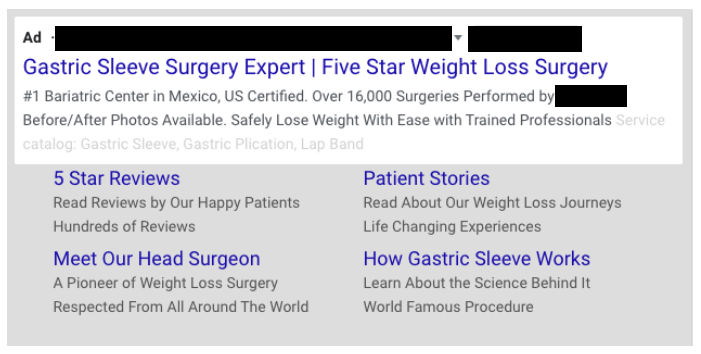
The Landing Page
Once the user clicks on the ad, Google sends them to a landing page chosen by the advertiser. This is where the user decides whether or not they want to pay for the product/make an appointment for the service.
This decision is known as a conversion or a lead. Because this is the last touchpoint of the user before they decide to purchase, the advertiser’s landing page must be of high-quality content and relevant to what the user is searching for.
Stretching Our Ad Dollars
For any campaign, it is crucial to make the most out of the budget that you have. In Google Adwords, because the user pays based on users who click on their ad, we want to focus on how much it costs for a click, aka, the cost per click(CPC).
By lowering our CPC, we will generate more clicks, and we will have more users visiting our website to convert potentially. Google’s algorithm to determine the CPC involves multiple factors, but we can directly control the expected click-through rate (clicks per impressions).
The higher your expected clickthrough rate is, the lower your CPC because it indicates to Google that your ad is highly relevant to the user’s search.
Optimizing Our Clickthrough Rate
To optimize the first step of the customer journey, the click, we need to create an eye-catching ad that is relevant to what the user is searching for.
This involves writing a strong ad copy for our expanded text ads, consisting of three headers and two descriptions shown to the user in the ad portion of the SERP. By rewriting the ad copy to be more eye-catching, relevant to the user, and informative about our business, we were able to increase the clickthrough rate by 30.66% (shown below).
When we onboarded the campaign in December of 2019, we rewrote the ads to be more relevant to the keywords we are targeting but by enticing more clicks and increasing our CTR (by 30.66%).
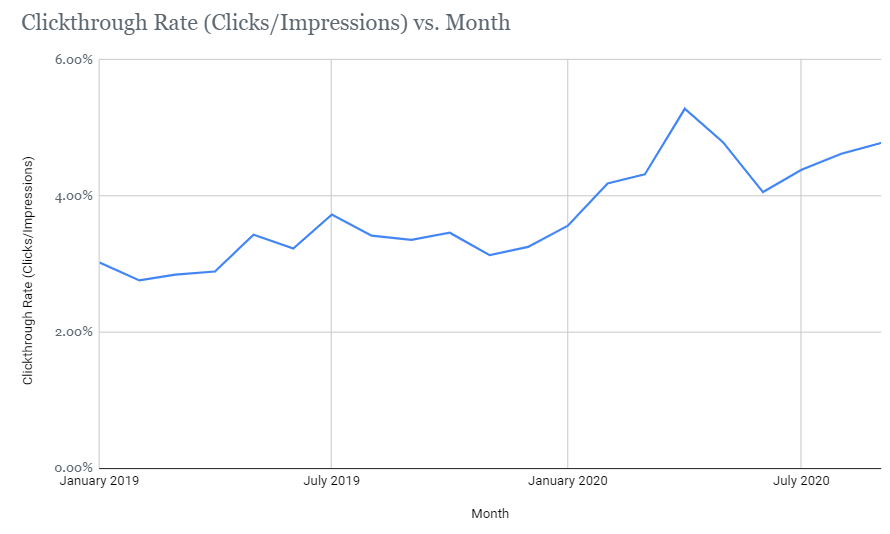
The Effect on CPC
By increasing the CTR, Google took note that our ads were gaining more traction and successfully generating traffic. Additionally, as we convert more users, Google notices that we are a relevant ad that they should show to more users with a similar intent.
Therefore, they lowered the overall CPC so that our ad can show up for more users and provide a better user experience for more people searching for our target keywords. As a result, our campaign’s CPC is, on average, lower than that of the previous year.
Increasing the Conversion Rate
Once users click on our ad, the next step is optimizing the landing page. Initially, the client simply directed all users to the home page of their website.
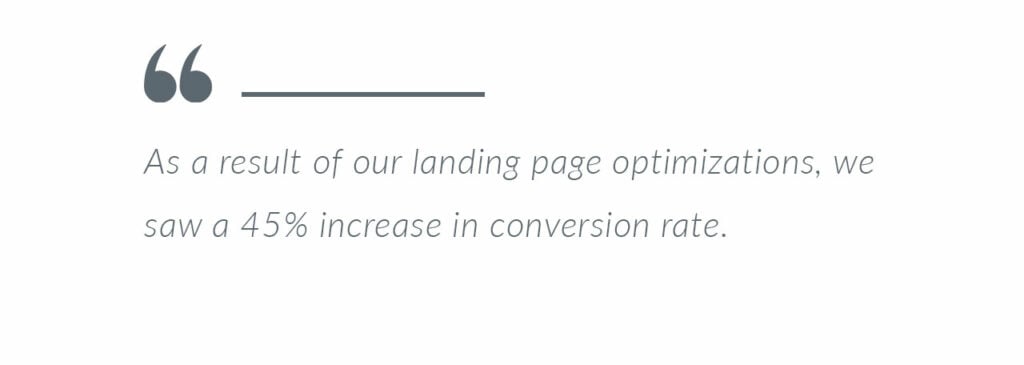
We created custom landing pages that would reduce the amount of effort needed to learn more about the procedure and our business(shown below).
Because we separated our ad groups based on procedure keywords, we precisely know what users are searching for. Therefore, we created multiple pages with content and media specific to the procedure they searched for. Below is an example landing page for an ad targeting the search term “Gastric Sleeve Surgery”

We tailored these multiple pages to each ad group and service that we are targeting, so they contain wording differences depending on what ad group they are in.
This applies to everything on the landing page including image choice, header copy, social proof, conversion driven statistics, and more.
As a result of our landing page optimizations, we saw a 45% increase in conversion rate (weighted).
Utilizing Data to Optimize Our Budget
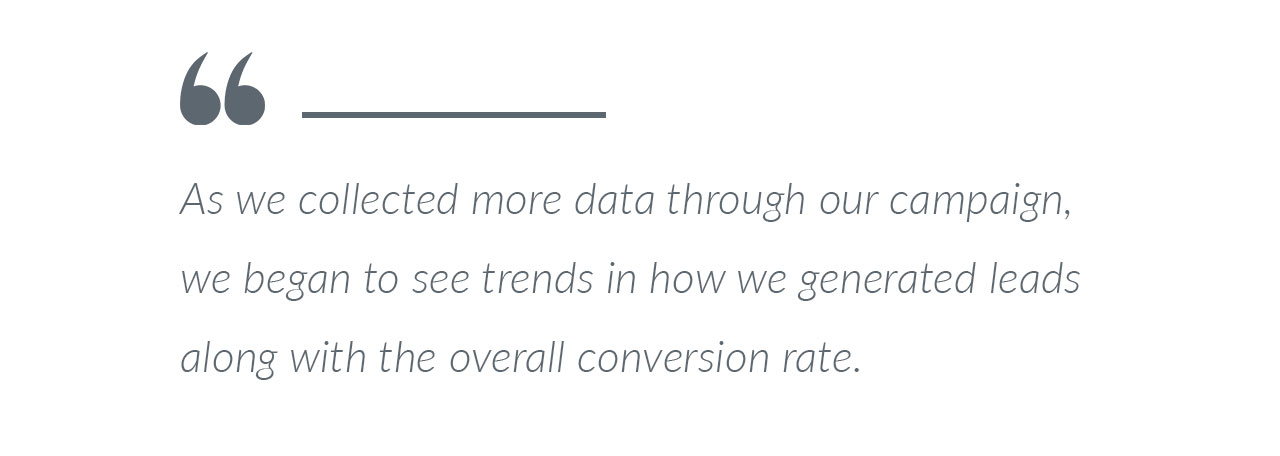 Initially, the client had not been utilizing the location or ad scheduling features of Google Adwords, so we turned on those features to collect data as detailed as possible.
Initially, the client had not been utilizing the location or ad scheduling features of Google Adwords, so we turned on those features to collect data as detailed as possible.
As we collected more data through our campaign, we began to see trends in how we generated leads and the overall conversion rate.
Certain parts of the country were more likely to click on our ad and convert into a lead, and as a result, we would increase our ad spend in those respective areas.
In addition to reallocating our budget in various parts of the country, we identified multiple times of the day and days of the week when conversions generated at a higher rate.
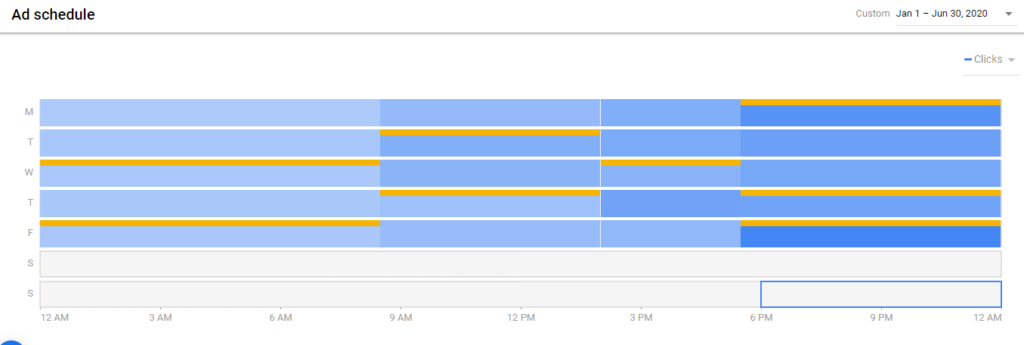
Therefore, we would reduce spend during time frames where we wouldn’t see increased conversion rates and increase spending during time frames that showed to be more fruitful (shown below)
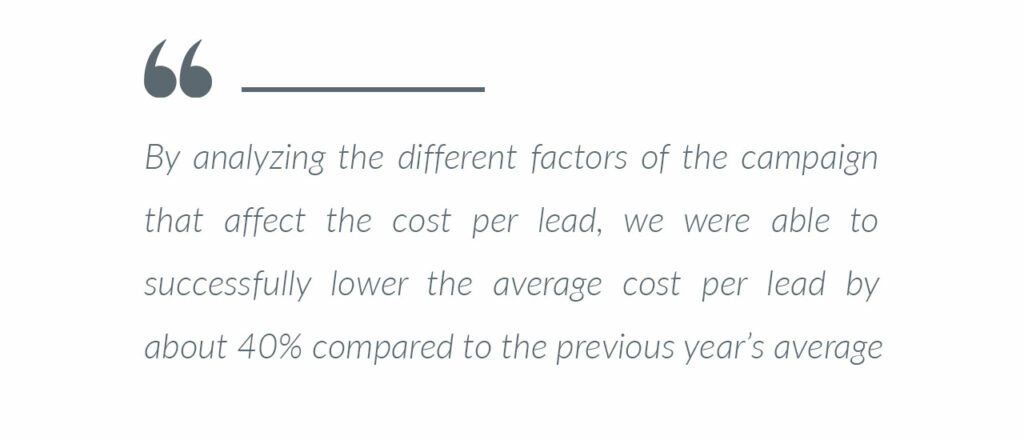
Lowered CPC + Increased Conversion Rates = Lowered CPL
By analyzing the different factors of the campaign that affect the cost per lead, we successfully lowered the average cost per lead by about 40% compared to the previous year’s average.
Despite the COVID-19 pandemic that shut down multiple businesses in March 2020, we managed to keep the average cost per lead reasonably low in the coming months.

Conclusion
When trying to make the most out of your budget in a paid search campaign, it is essential to look at all aspects of the campaign. By identifying what affects the KPI that we are trying to optimize, the cost per lead, and optimizing these parts of the campaign individually, we could successfully generate more leads within the same budget.
We can narrow down exactly what was within our control, and by making edits to these parts of the campaign, the other metrics and KPIs followed suit, generating more leads for our client.
